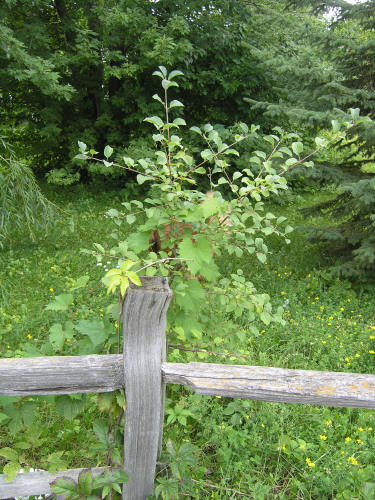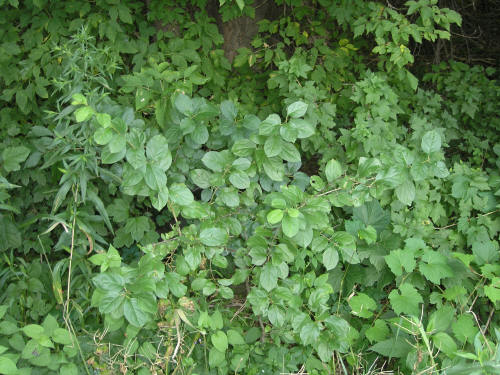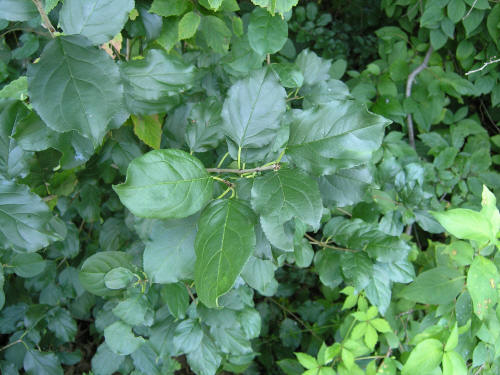European Buckthorn
Common Buckthorn, European Buckthorn
Rhamnus cathartica L.
Buckthorn Family (Rhamnaceae)

▲ ▼ young plants

▲ ▼ young plants


▲ branch with fruit

▲ ▼ leaves


▲ shiny bark with lenticels on 1.5 inch diameter stem
Common or European Buckthorn (Rhamnus catharticus):
Location on or near campus: Unknown
- Large shrub or small tree in the Buckthorn Family (Rhamnaceae) with dull green, oval leaves, shiny brownish bark with horizontal lenticels (lines)
- Leaves tend to be opposite or near opposite (different from native buckthorn alternate leaf arrangement), and have veins that tend to parallel or curve along with the outer margins of the leaves
- Leaves have finely toothed margins and no hairs on either side
- Leaf tips are rounded or bluntly pointed (native species have tapering, pointed leaf tips)
- Leaves may have a dull to glossy surface appearance
- Often short stems end in a thorn
- Is dioecious, with separate male and female plants; has tiny flowers; fruit is a green, turning to reddish purple to black drupe, eaten & spread by birds
- Was originally planted for wildlife habitat, shelterbelts, but now invades pastures, open woodlands, replacing native species
- Is also an alternate host for oat crown rust
- Is a noxious weed in several Midwest and northern states--and becoming more widespread
in Missouri--however, a native species, Carolina Buckthorn (Rhamnus caroliniana) is very similar in appearance and is not invasive and should not be mistakenly controlled
- Native buckthorns have alternate leaves and more tapered, pointed leaf tips
- A similar invasive species, Glossy Buckthorn (Frangula alnus) has smooth margins on its leaves